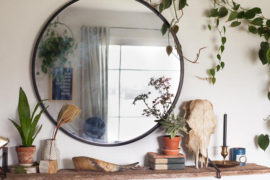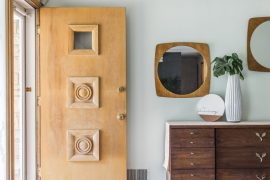In addition to being incredibly talented professionals within the Indianapolis design community, Brent Roberts, vice president of architectural services at PHANOMEN/design and Randy Veatch, principal at Rowland Design, own one of the coolest properties in downtown Indianapolis. Designed by Rembrandt “Brandt” Steele in 1904 (son of T.C. Steele), as his family residence, the house is located on East Drive in the historic Woodruff Place neighborhood, one of Indianapolis’ earliest Victorian era suburbs. Roberts and Veatch discuss how they treat their own home as designers, offer advice to us mere mortals who would like to elevate our own spaces, and suggest tips for working with design professionals.
Paula Katz: Can you tell us a little bit about the history of your home?
Brent Roberts: Brandt Steele originally designed this house for his family in 1903. His wife Helen was also an artist, a kind of “it” creative couple. They had three sons and owned the house until the early 1960s. Between the Steele’s and us there were only four owners.
Randy Veatch: The cool thing about this house is that it was a hundred years old when we moved in, and nobody had done anything to it. Nobody had done anything to it. Nobody had carpeted, nobody had wallpapered, nobody had done anything to it. So, when we moved in it was a one-hundred-year-old plumbing and the electrical was all knob and tube.
Polina Osherov: How long was the length of the renovation?
RV: Well…
BR: Seventeen years. [laughing]
RV: I was going to say it’s still going on; with an architect and a designer it never stops.
BR: The intense renovation was about two-and-a-half years, which included replacing all of the electrical and plumbing, redoing all the bathrooms and the kitchen.
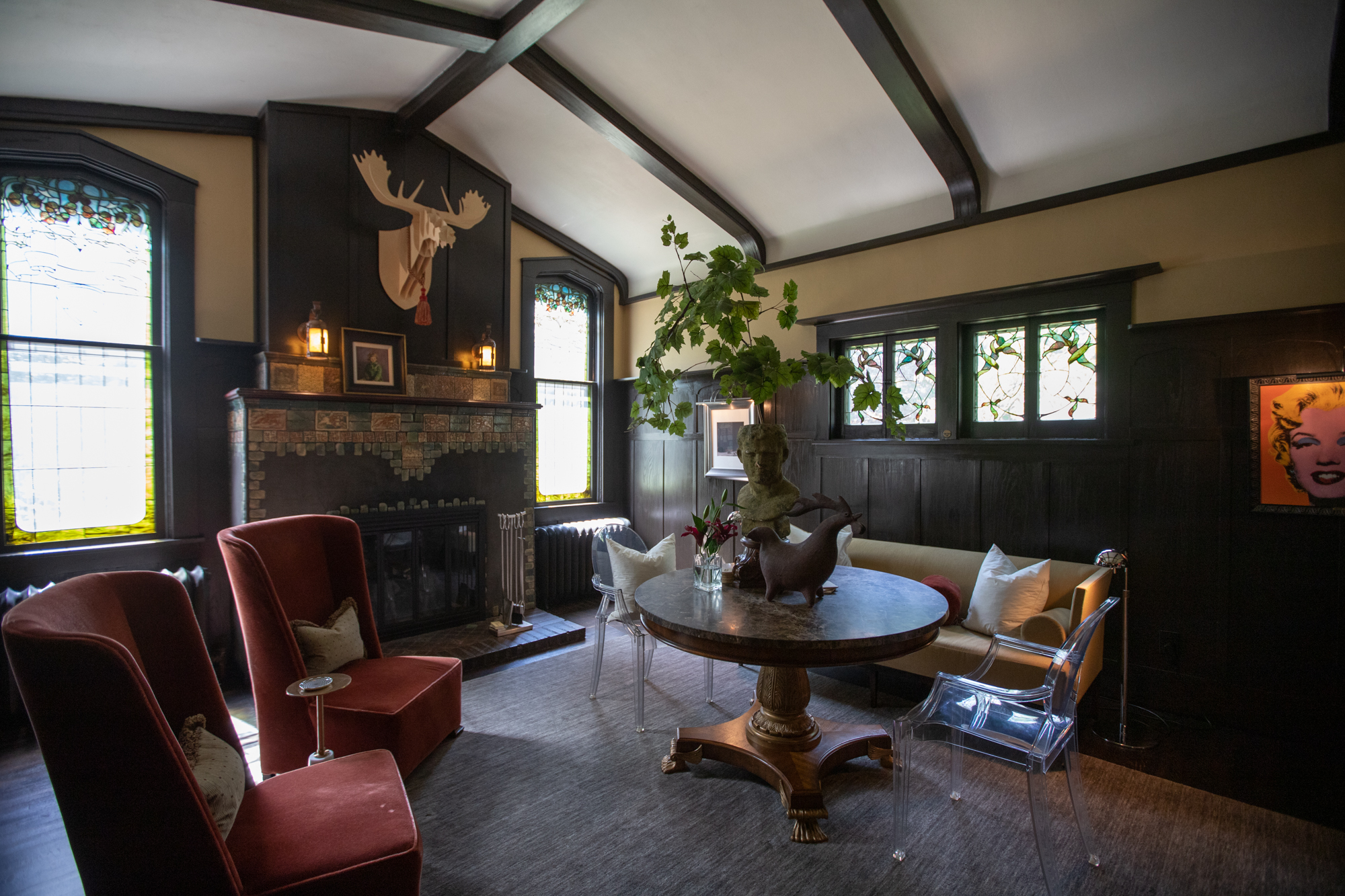
Paneling on the chimney was added to accentuate the height of the ceiling.
PO: How would you describe your overall aesthetic?
RV: It’s all over the place. We have two fur babies, and we want to live in our house. We do not want a show place. We don’t want iconic architectural furniture. We just want it to be comfortable. I don’t want anyone to walk into this house and have to ask, “am I allowed to sit on this chair?” If you spill a glass of wine, that’s fine.
BR: And I think it’s partly because we work well together in that we have slightly different aesthetics, they overlap. We like having a home where you are living, it’s not immediately ready for photography.
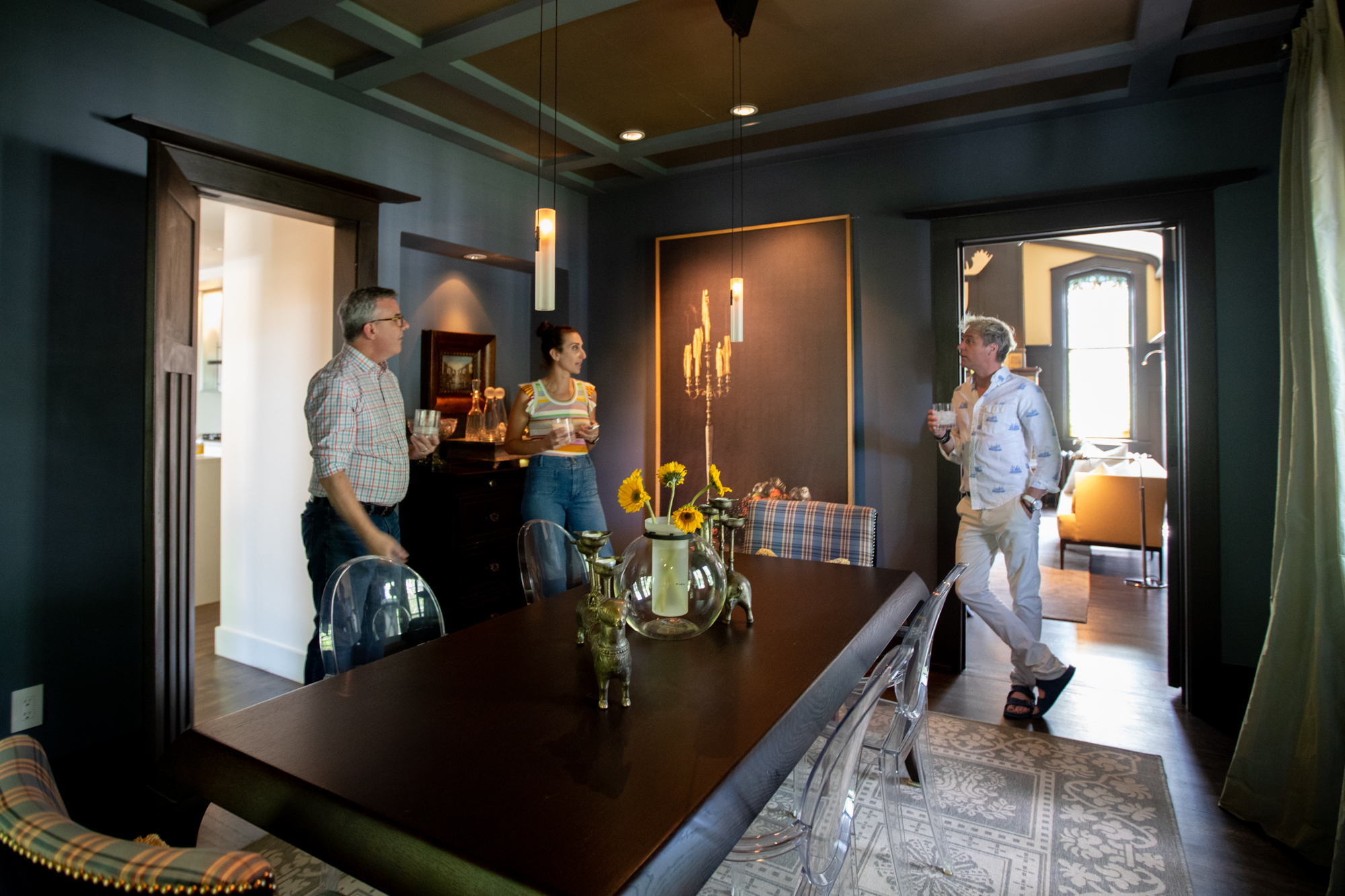
In the dining room a plate rail was removed, and strapping was added.
PK: Your art is incredibly diverse. Could you share a bit more on how you decide that aspect of your overall aesthetic?
RV: We do have a little bit different tastes when it comes to art. The only rule with art, whenever we purchase a piece of art we both have to like it.
BR: We are a bit eclectic. We might decide we need a photograph next or an abstract or maybe a little bit more whimsey. And we do have a very minor art storage program upstairs that things kind of cycle in and out. So, something may not be up the next time someone is here.
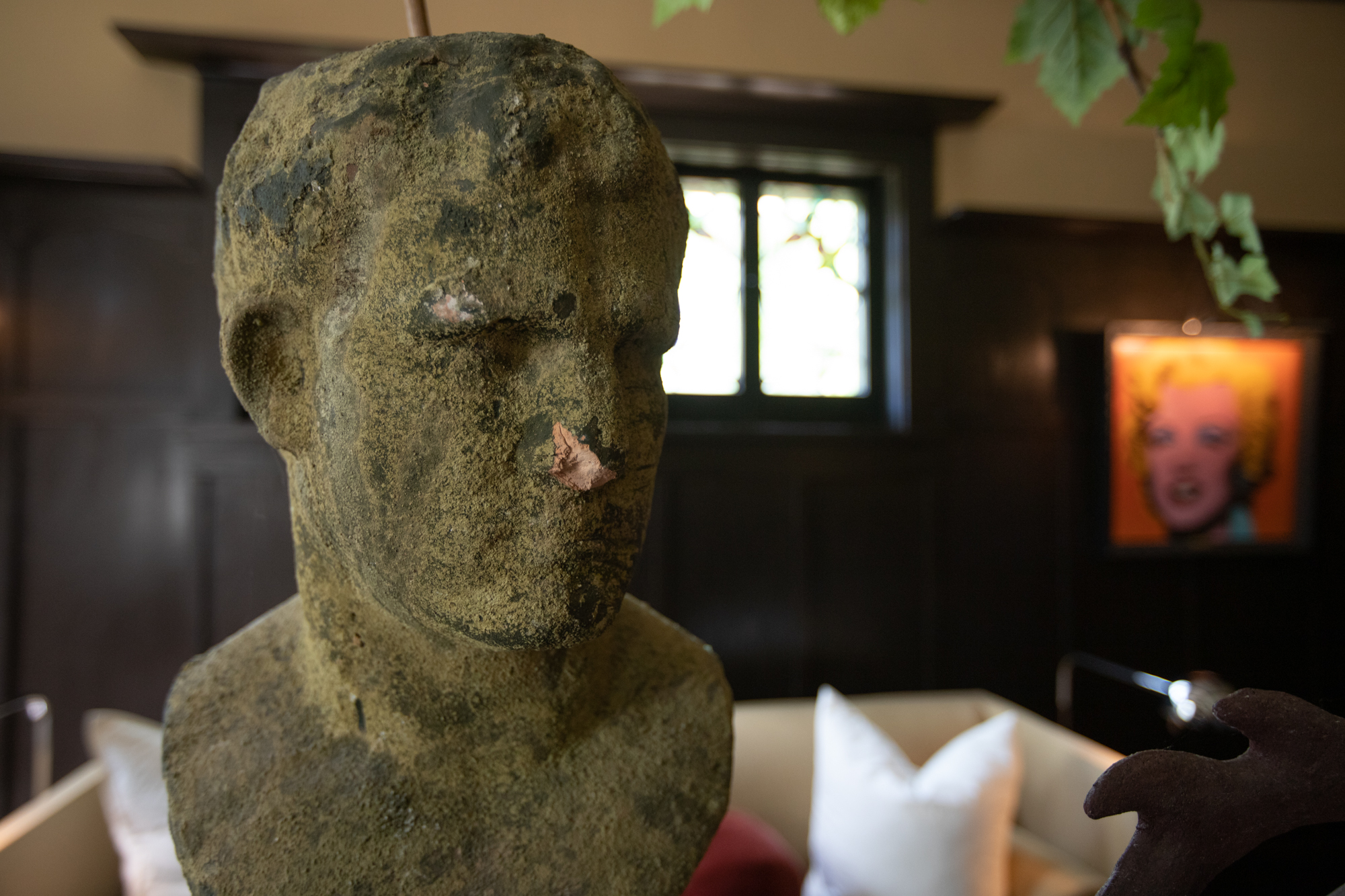
PK: Do you ever look around and say “that is Brent” or “that is Randy” or do you think it was a true collaboration?
RV: I completely believe that it was all collaborative.
BR: There are elements that are him or that are me but not a room a space.
RV: I would say that the things that are more me are furniture, like the marble table in the living room. I bought that without him. We generally don’t do that, but I came home, and I was like, “how do you feel about a 54-inch round dining table?” Brent said, “I suspect I’m going to love it.” We built this home, and we are pretty respectful of each other, and how we want to live. We have a pretty aligned view on what we want.
BR: We put an importance on being professionals when we worked in the office together (at Rowland). We treated each other like coworkers even though we were dating. I think that attitude has led us almost 25 years into our relationship.
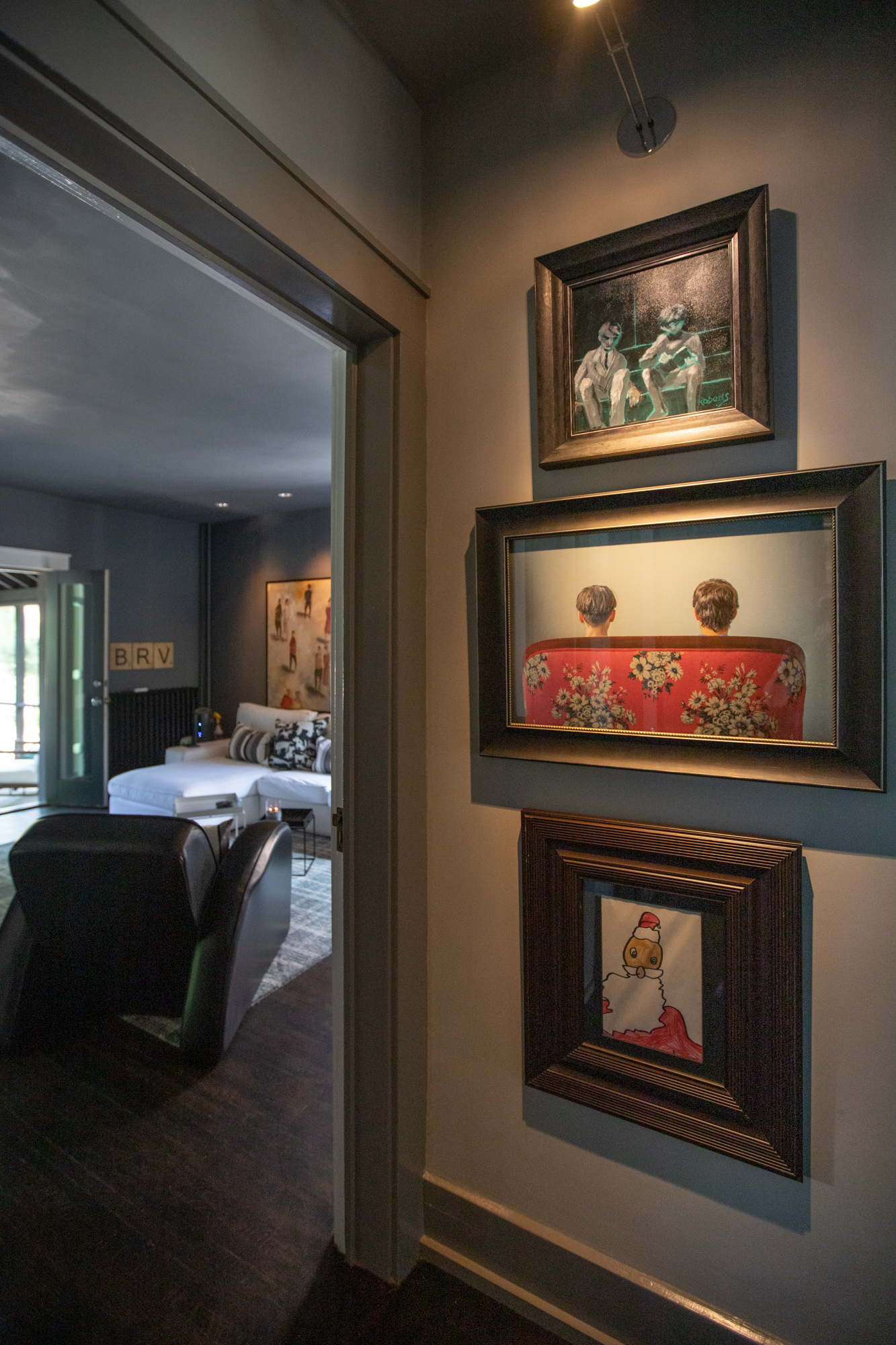
PO: What is the creative process like for you? As a photographer I get a lot of clients who think that I can wave a magic wand and “do my thing”. I need to know what they like, and they don’t know, so it’s a process of removing what they don’t like until we find something that resonates for them. Is it a similar process for you?
BR: From my perspective. You have to talk to them and if they don’t know what they want then you need to talk to them a little bit more.
PO: Do you give them books, references, send them to Pinterest?
BR: I personally don’t like Pinterest. We do like, at least in our office, when a client gives us images as long as it’s curated already. 20 images is great. If you give me a hundred or two hundred, I can’t do anything with that.
RV: I do not like Pinterest boards. I like to talk to clients, the people who are going to be living or working in the spaces and understand what it is they want, what their needs are. It’s also funny when clients bring images to you because if they do, I’ll ask them to talk about what the image says to them. “What do you like about it?” And most of the time, it’s “I like the color of the wall or this chair,” and when you dissect the image with them there are few things about it that they actually like. You have to make sure you understand what they are actually showing you.
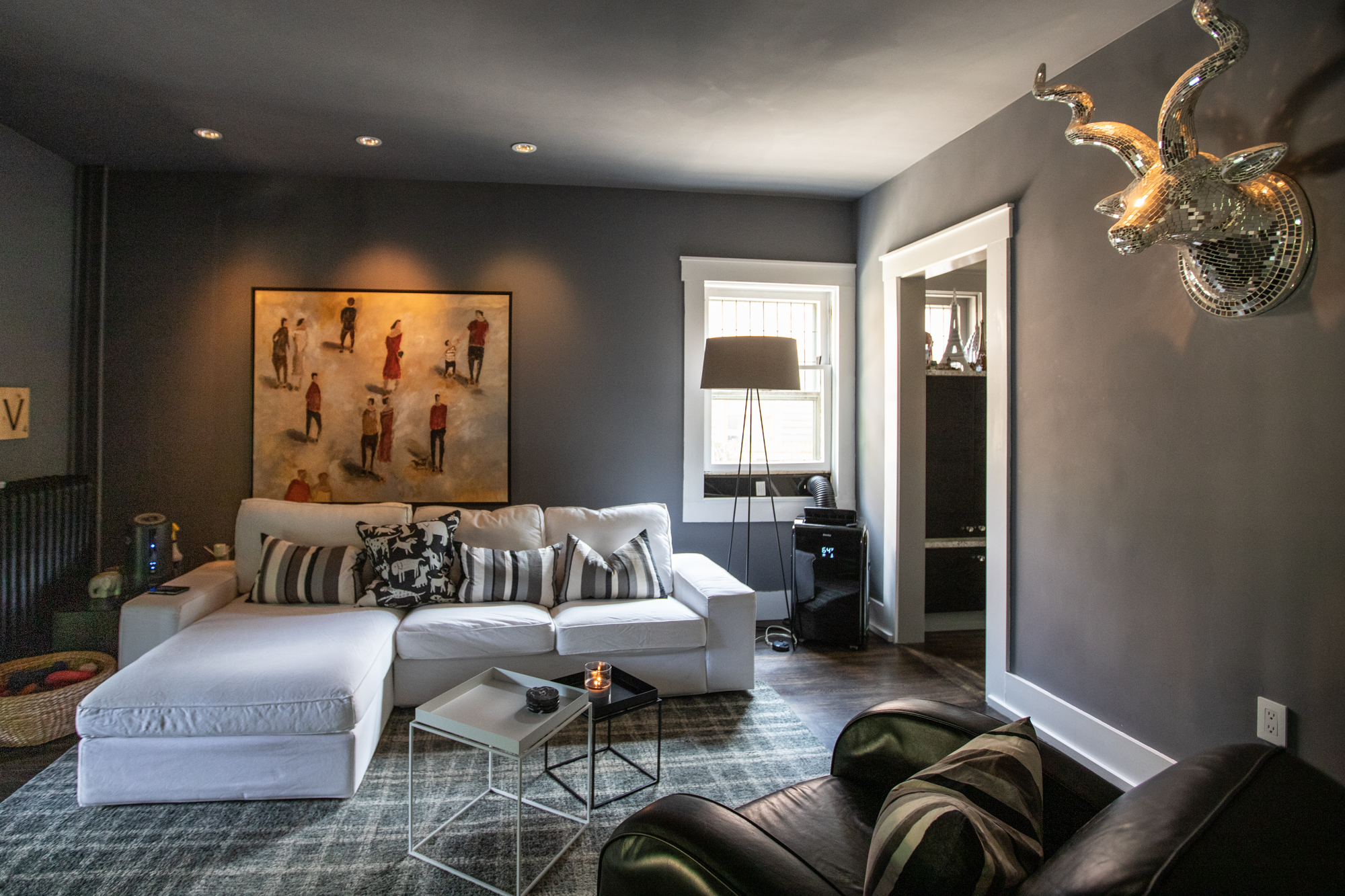
PO: Do you think when people share images there is a risk of being too derivative?
RV: I don’t copy anything. So, if that is what you want, you are not going to get that from me. I will give you amazing space that works for you and your lifestyle and how you want to live.
BR: We try to steer away from “I want this”. We will give you something that feels like that with the finishes and how the spaces feels and the balance of it, but we will not mimic something exactly.
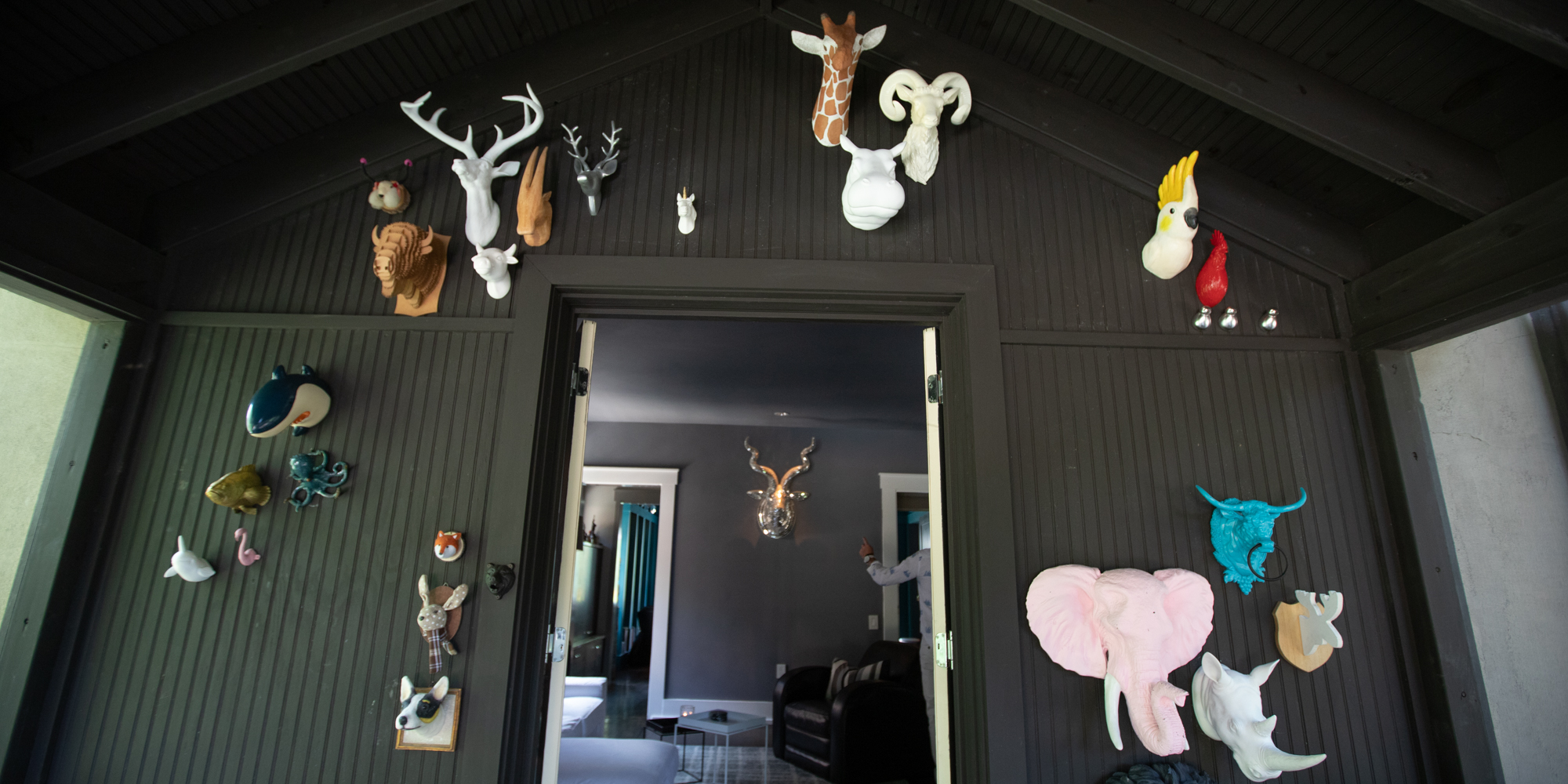
PK: Who would be an ideal client? Can you expand on that? I mean, besides not showing up with your Pinterest login.
RV: An ideal client is hard because it is all about personalities. Some of my worst projects are my best clients. That’s the way it is. It could be a contractor issue; it could have been anything. But at the end of the day, you walk away, and you think “that was an amazing client.” And I have had a lot of those in my career, so I am very thankful.
BR: And I would say trust is a big thing. If the client gets to a point where they trust you to do what is in their best interest it goes so much better. If they don’t, if they are looking at your doubtfully and questioning everything, we’ve fired clients for that. That’s not a good relationship and we can’t move on together.
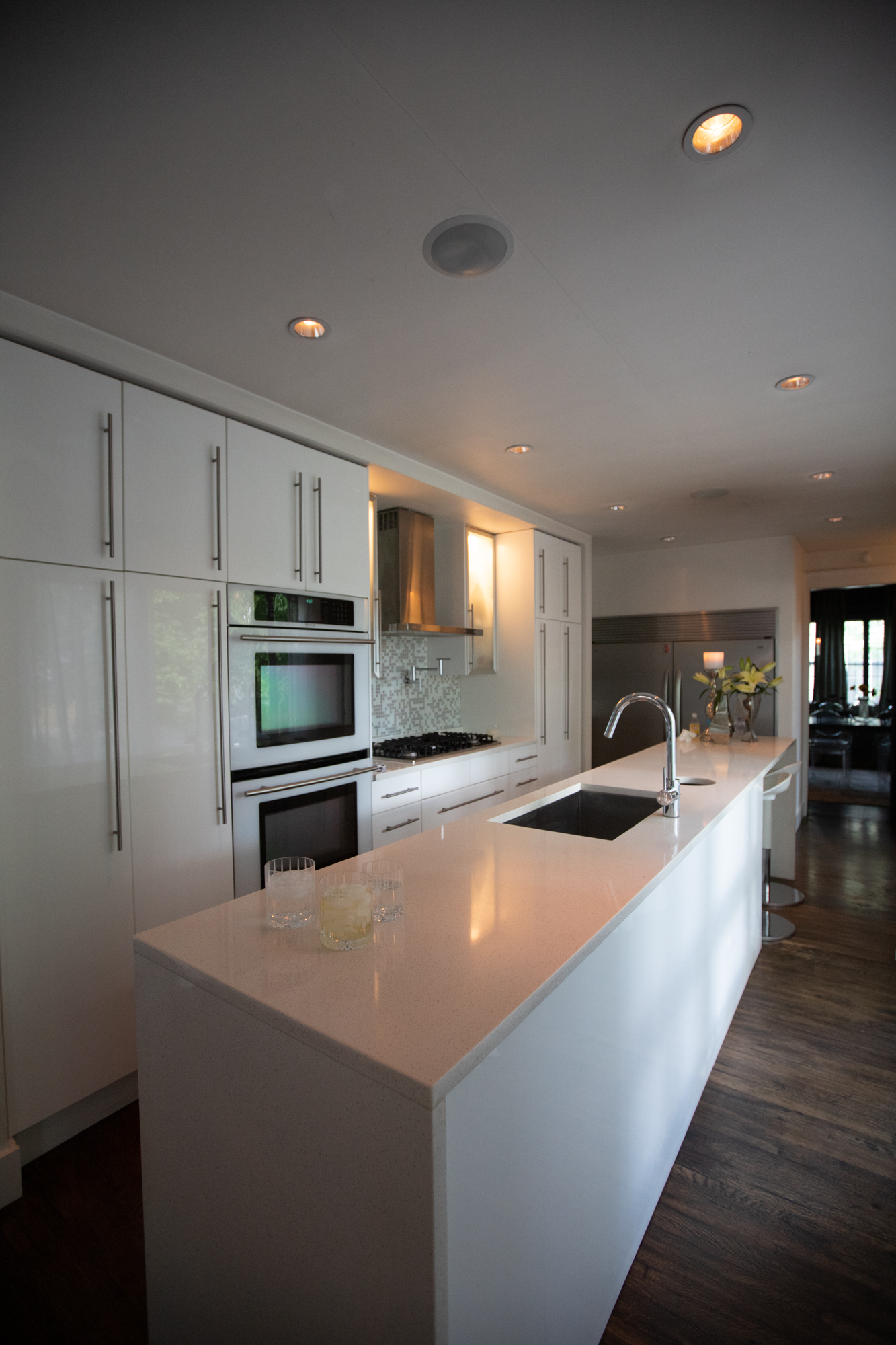
The kitchen was originally three rooms: a butler’s pantry, a bath and a square shaped kitchen.
PK: What about people who want to go at it without a designer or might not have the budget to work with someone, what would you say to them?
RV: There are ways to attack it. If you are comfortable and confident enough to do it on your own, do it. But of you really want a great space and you are uncomfortable getting started you can always just do a schematic. I’ll give you some ideas, I’ll give you a floor plan and you can execute it. But at least get a good foundation so you are not spinning your wheels or worse wasting money trying to achieve something that you may never be able to realize. At Rowland we will contract for schematic design and once we determine what your project is then we can give you an idea what the fee is to work with us on additional phases.
BR: And I would caution them from trusting any cable tv shows. Those shows are on a budget and schedule, and they have the benefit of only presenting what the camera shows, edited. You don’t know what that project is going to look like in three months or a year or further out. They sometimes have good design ideas, but the execution may look good on camera, but it’s not going to work out for you. And I think that plays in with what Randy was saying about a schematic. Both of our firms will do schematic design. It helps the client figure out what their scope is. If you ask a client “what is your scope?”, they will tell you a list of things longer than their arm. With a schematic design contract, you can quickly pin them on their priorities.
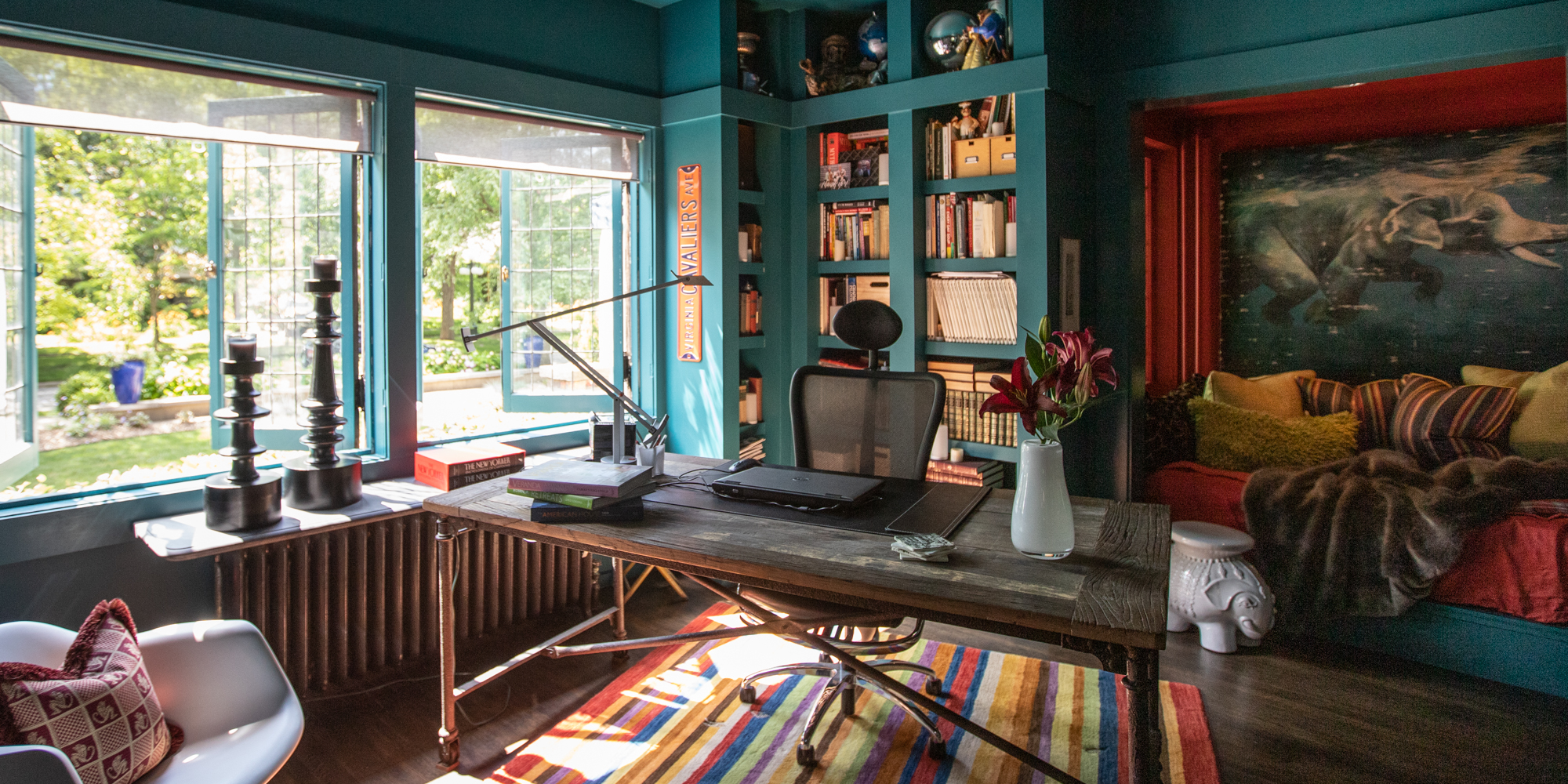
One of the larger renovation projects, Roberts and Veatch built the walls and shelves themselves. They lowered the ceiling and added in a daybed to create a cozy space.
PK: Do you see some trends from those home improvement shows that make you cringe?
RV: I have two words: shiplap and Edison bulbs.
PK: Do you have any local businesses or vendors that you recommend?
RV: My favorite is Purposeful Design. PD is a group that trains men that have had addiction issues and potentially homelessness. Some of the things they are churning out are just amazing. And the story tugs at your heart. Whenever we can, we give work to PD.



